The Old Town Jail of Leonardtown, Maryland:
More than one story is tied to Leonardtown, Maryland’s Old Jail Museum. The structure illustrates a “history of jailers, prisoners and its role in the Underground Railroad.” That being said, another historical narrative is also connected to the jailhouse. Well, it is more of a local legend “the life and legend of Moll Dyer the ‘St. Mary’s County witch.’”
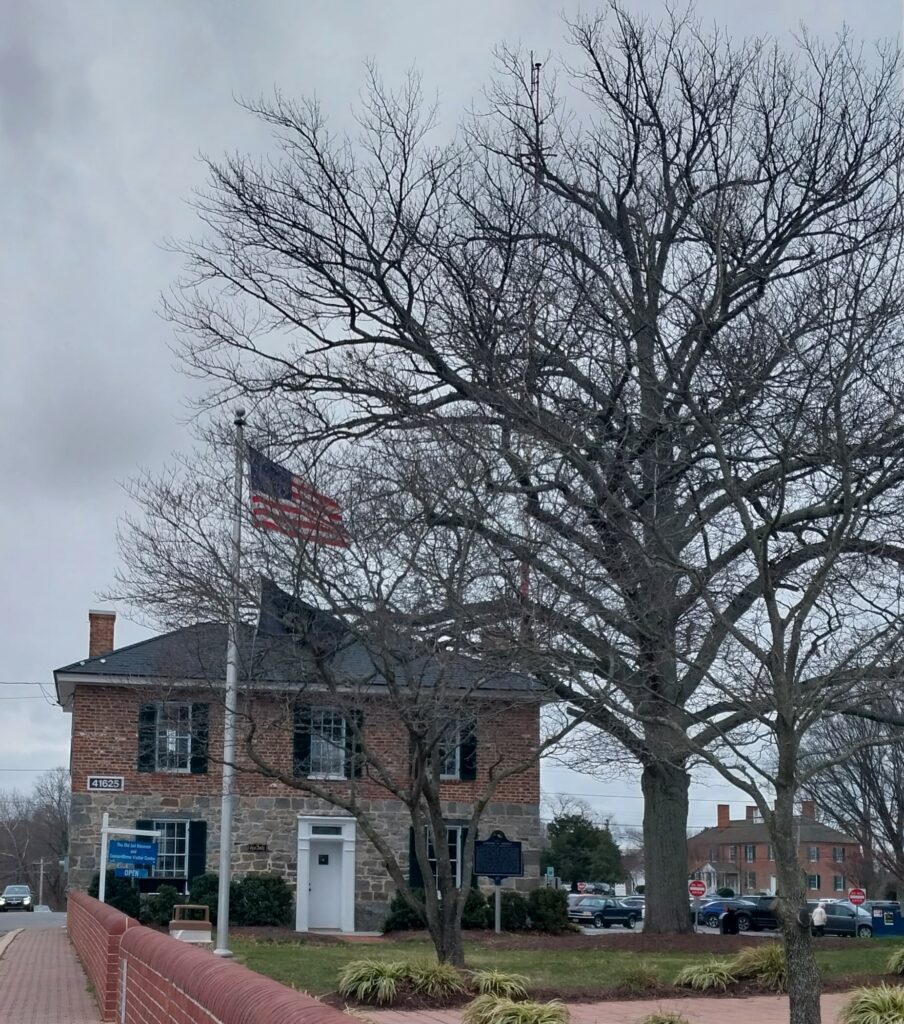
The Old Jail’s Structure:
The Old Jail is a building that was developed in 1876 to serve as the sixth iteration of the local county jail. The structure is 20 by 25 feet, two stories high and built of stone and brick. The structure’s original layout included two rooms on the first floor that were created for the jailer and their family while the three cells on the second floor were dedicated to holding the prisoners. The prisoners were segregated by gender and race with one cell for all Black prisoners.
The Old Jail’s Layout:
Today, the Old Jail’s layout consists of two rooms on the first floor that serve as the Leonardtown Visitor Center/gift shop and one exhibit that showcases the building’s history. The second floor includes two exhibits that showcase the courthouse’s connection to the Underground Railroad Network to Freedom and the lynching of a Black man named Benjamin Hance. Hance was kidnapped from the 1876 jail and was lynched by a mob of white men on June 17, 1887. The building is located in the center of Leonardtown, sharing a plot of land with the current and functioning county courthouse. A historical marker commemorating the lynching of Benjamin Hance is located in front of the Old Jail.


The brick path connected to the front entrance of the Old Jail also pays respect to the runaway slaves who were incarcerated at the Old Jail as the men’s names are engraved in the brick closest to the tree. However, rather than refer to them as runaway slaves in the brick they are referred to as “freedom seekers.”
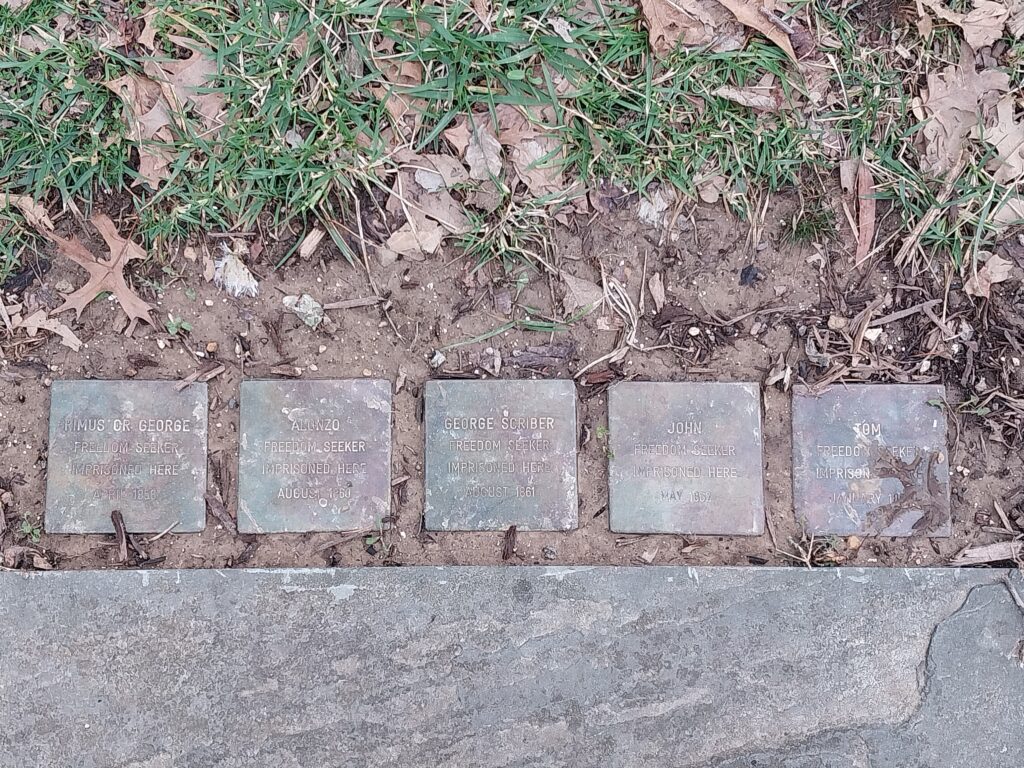
Who owns the Old Jail?
The building itself is owned by the St. Mary’s County government. In 2020, the St. Mary’s County Museum Division took control of the museum’s operations by updating the exhibits and adding the Leonardtown Visitor Center. The Old Jail shares land with the current county courthouse and is located behind historic downtown Leonardtown Square and near the St. Mary’s County Historical Society.
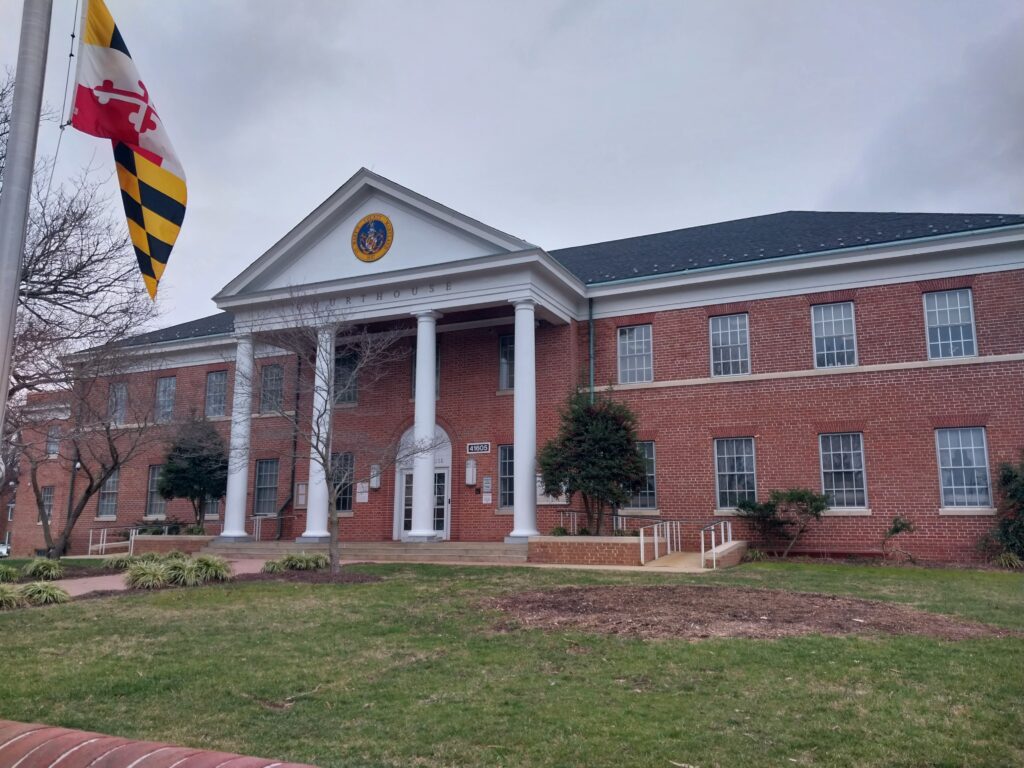
Leonardtown Square has its own history tied to Maryland’s provincial period as well as a WWI memorial dedicated to town residents. The Square also serves as a shopping center with specialty stores and restaurants. In relation to the St. Mary’s County Historical Society, the Old Jail was once used to house the records of the historical society.
Who is the audience?
The primary audience of the Old Jail are tourists and/or visitors to Leonardtown. Although the building serves a purpose in exhibiting local history a good portion of the building caters to tourists. The Old Jail’s gift shop and visitor center are both used to advertise the town’s attractions, businesses and events. Awkwardly, the Old Jail also brings more than just tourists to its vicinity as it also shares a path with courthouse patrons. Although there is a parking lot behind the jail, the lot is mostly for courthouse employees and visitors. I believe visitors of the Old Jail are meant to walk rather than drive to the location from the town square due to the signage on the sidewalks.
What items are used to communicate the interpretation?
The primary items used to communicate the interpretation of the Old Jail include a 1860s style ballot box, an exhibition of the building’s roof tiles, a brick fireplace, parchment showing wicken symbols, model bunk beds, a 1930s prisoner restraining device, chamber pot and African American art.

All of the items illustrate an aspect of history in association with St. Mary’s County and Leonardtown. Information panels and markers are also used to present more information to visitors on all of the presented items. Many items are missing from the exhibits as the location is currently working to create new exhibitions in two of the rooms on the second floor. Glass cases will be used to show off these items once they are ready for the public.The space does not have interactive elements and provides a collection of reading materials. One interpreter resided in the space and was ready to answer any questions about the location while also carrying out the responsibilities of a gift shop clerk.
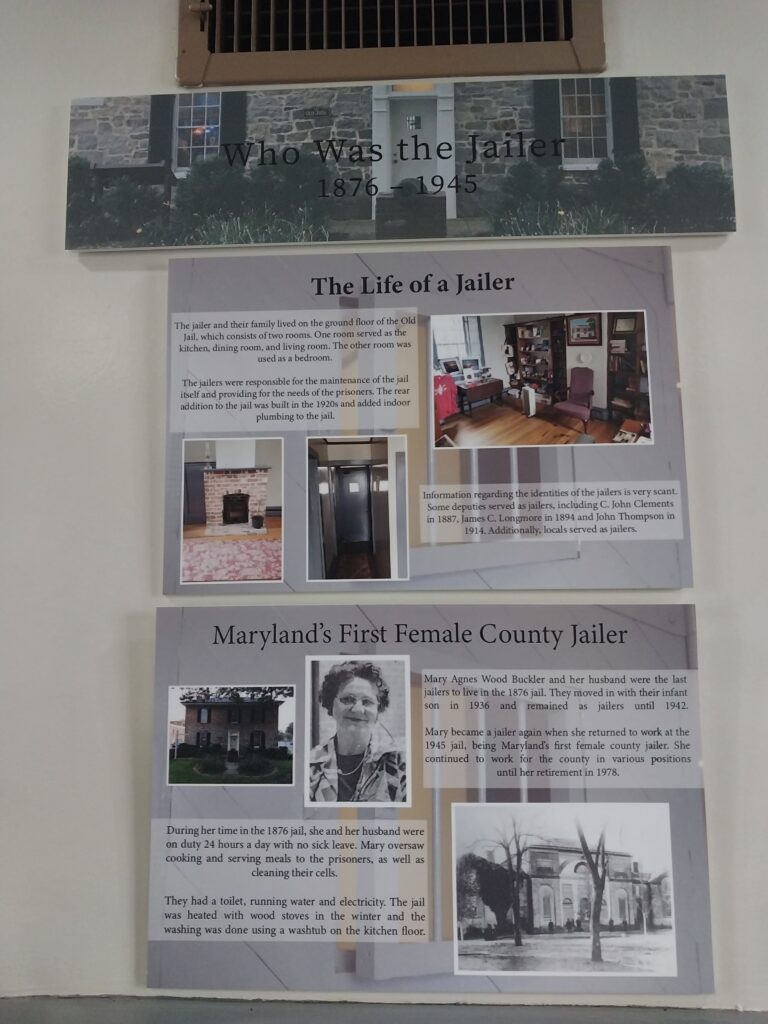
One of the most important aspects of the Old Jail is an exhibit showcasing the jar of soil that was collected during a Soil Collection Ceremony in 2019 to honor Benjamin Hance. The exhibit demonstrates how St. Mary’s County is working in partnership with the Equal Justice Initiative to memoralize lynching victims across the country. Another important aspect of the Old Jail is a timeline that demonstrates how the Old Jail has evolved overtime since its original iteration in 1660 to 2020.


The Weaknesses:
A weakness of the Old Jail is how it tries to connect itself to the “legend” of the town witch Moll Dyer who was in all honesty an herbalist. A window on the first floor attempts to connect to this legend by having parchment paper with wicken symbols and poems about witches laid in front of it. I would remove this from the exhibition and just allow the site interpreter to direct visitors to the St. Mary’s County Historical Society as that location has more relevant information on Moll Dyer. Another weakness of the Old Jail was the lack of physical items in the space. Objects demonstrating the Old Jail’s history should be more apparent in the exhibits that are currently a work in progress.
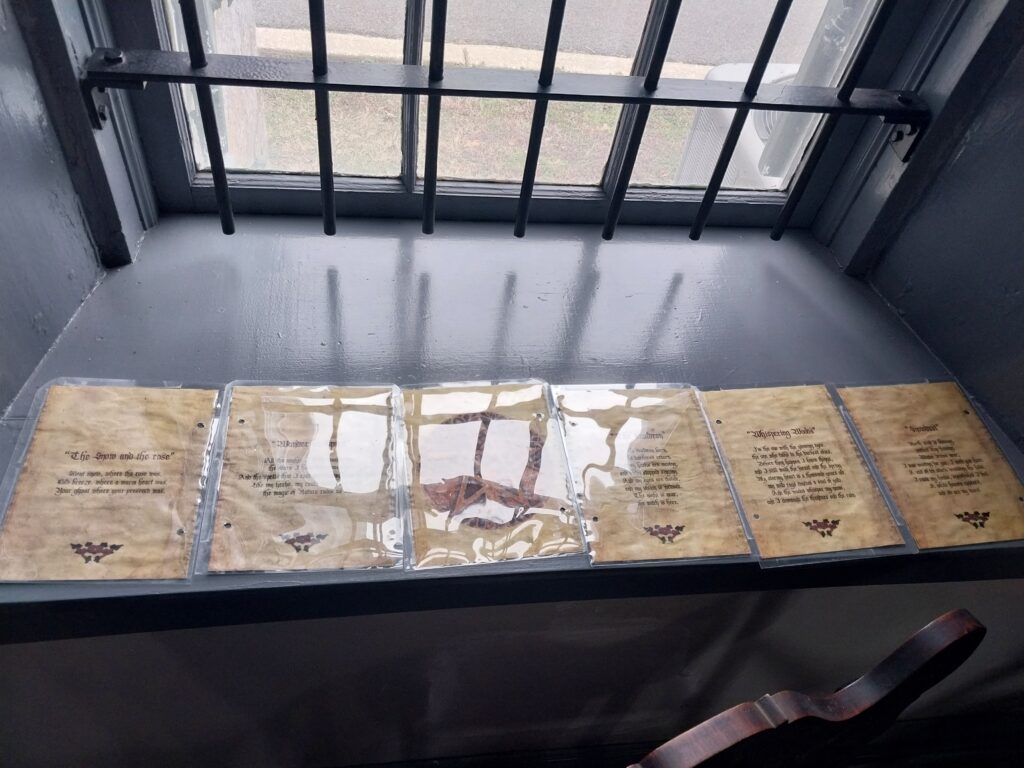

The Digital Counterpart:
The digital presence of the site is connected to the St. Mary’s County government’s recreation and park’s museum division. So, if one were to visit the St. Mary’s County of Maryland website the Old Jail would not be the main focal point of the site. In comparison, the Old Jail’s digital counterpart is meant to provide information on the Old Jail and Leonardtown Visitor Center’s hours of operation. The site provides an overview of the museum’s purpose and its connection to the Underground Railroad’s Network to Freedom. The historical argument presented at the physical site is consistent with what is presented digitally. But rather than go into depth about its historical interpretations, the site provides links to other sites that might provide more information to its visitors. For instance, the site provides a link to an article from the Equal Justice Initiative that discusses the placement of the Historical marker dedicated to Benjamin Hance. The site does not provide participatory or interactive elements except clickable links. The site creators cannot be reached unless you fill out an online form to provide information or feedback to the Recreation and Parks agency of St. Mary’s County. I would change the digital experience by providing more information on the Old Jail itself such as a photo gallery, a video tour and a video with a site interpreter. In doing so, the digital site can allow for more historical interpretation that separates itself from the tourist aspect of the Old Jail’s visitor center.